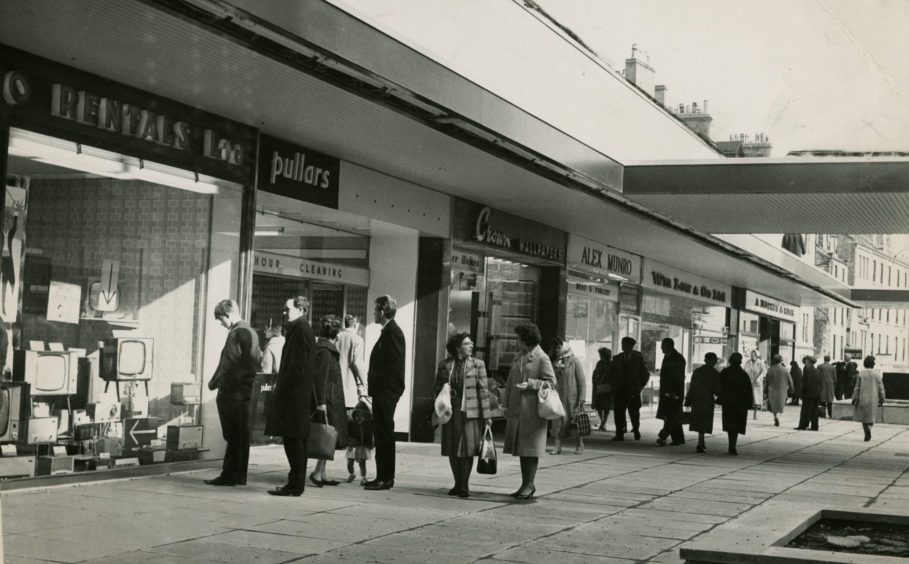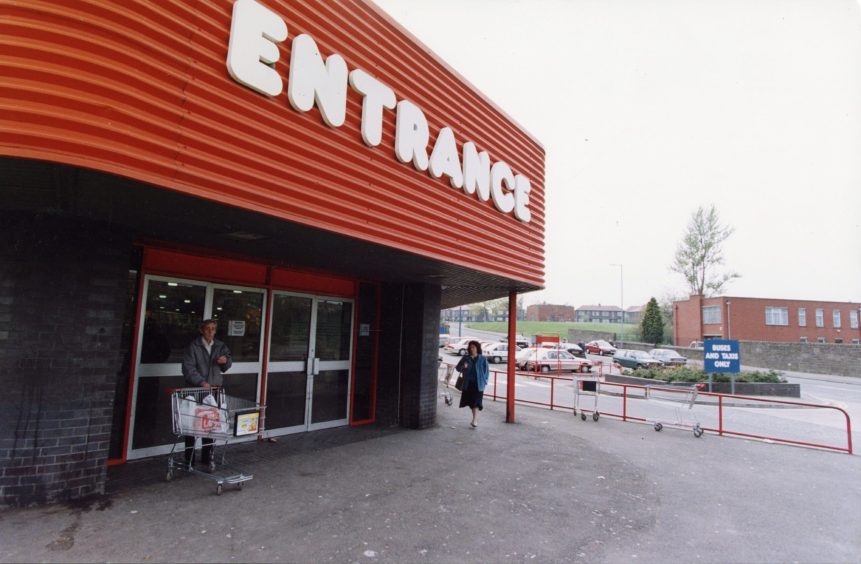
Do you remember getting your messages at William Low?
The defunct supermarket giant began life in Dundee and stocked everything you could imagine and more besides.
William Low disappeared from high streets after being seen off by Tesco in September 1994.
It marked the end of 126 years of business.
This supermarket story began in Dundee
One of the most remarkable stories in modern food retailing began in 1868 when two young grocers got together to open a shop in Dundee’s Ure Street.
Within a few years Mr William Rettie and Mr William Low had established a substantial chain of small shops throughout the city and the surrounding area.
The late 19th Century and early 20th Century was a time of enormous change in population patterns.
People came into the cities in search of work.
Chains of grocer’s shops were opened to cater for their needs.
It was around this time that Sainsburys started up and Lipton’s, Templeton’s and Cochrane were trading on a grand scale.
By the outbreak of the First World War there were about 80 William Low counter shops spread all over Scotland.
They were loosely controlled from the centre, with the managers having a considerable degree of freedom.
The chain remained a family concern, with the third generation of the two families entering the business in the 1950s.
William Low became supermarket leader
It was also around this time that the great revolution in the retail grocery trade began.
Household names like Johnston’s Stores, Maypole and Buttercup vanished as the forerunners of the modern supermarkets established themselves.
William Low realised that it was a case of respond or go under.
In 1958 the first self-service shop was opened and over the next 10 years a programme of modernisation saw the entire chain revamped.
Old shops were replaced by modern self-service supermarkets.
The basic philosophy was to match, and better, the multi-nationals and other big multiples with state-of-the-art shopping facilities.
In 1963 William Low opened in the Overgate Centre and advertised “groceries and provisions of the highest quality at the keenest prices”.
This included its cheap but tasty own-brand range.
Staff were specially trained for “quick, courteous and helpful service”.
Instead of 85 small counter shops, there were 45 large food retail units by 1971.
Ten points that were vital for shoppers
A supermarket opened in Dundee’s Albert Street in 1972 and the company went public in 1973, although the family continued to hold a significant stake.
The operation was run from its head office and distribution centre at the Dryburgh Industrial Estate in Dundee.
In 1975 a separate chain of freezer centres trading as Lowfreeze was launched.
But there could be no standing still as the relentless march of the big multi-nationals posed a new threat to Scotland’s major home-based supermarket chain.
A brisk programme of expansion was set in motion with a batch of new stores being opened every year including Monifieth in 1978.
An advertising feature offered a guide on how to shop in the new supermarket with “ten points that William Low considers vital for its customers in Monifieth”.
These included making a shopping list and avoiding peak times because “you can think better and buy more wisely when the supermarket’s quieter”.
Check the date on the packet when buying perishable goods and “ask the butchery manager’s advice about best buys of inexpensive cuts of meat”.
“Follow the same route every time you go through the supermarket,” it read.
“This way you won’t miss anything, including special offers.
“Don’t burden yourself needlessly with heavy items. For instance, a packet of soup is much lighter than a can.”
By 1979 William Low opened a new store on Dundee’s Perth Road and were now trading from 45 supermarkets and 13 freezer centres.
Eddi Reader was behind the till in 1986
An ambitious expansion programme began in 1980.
In 1985 Tyneside-based Laws Stores was acquired and the dark blue William Low lorry roamed the roads from Dundee to England.
Maybe you remember the Barnhill supermarket or the store in Pitkerro Road?
“The price is always way down” was the William Low tagline.
Some people may remember Eddi Reader singing about the low prices in the 1986 television advert which was her first professional engagement.
She was behind the till in a William Low uniform.
Two years later she was singing a number 1 song on Top of the Pops with Perfect.
Lowfreeze, which included a store at the Highgate Centre in Lochee, was sold to Bejam in June 1987 for £3.5m.
By the early 1990s, variety discount store chains made their presence known, including Kwik Save, Norco and Shoprite.
People were obviously worried about money, so the discounters’ proposition was incredibly appealing.
William Low decided to invest in the future.
It opened a supermarket at the former Camperdown Works in Lochee in 1991 and developed another store on Kingsway West which opened in 1993.
The supermarket opened when the former ice rink was sold for £2m.
It was short-lived.
William Low was struggling in 1993
William Low’s pre-tax profits rose just 2% to £21.12m from £20.62m in 1993.
Chairman James Millar blamed “tough price competition, discount supermarkets, low inflation and shoppers going downmarket”.
He said: “Every retailer is finding it difficult because of the recessionary position and the downturn in consumer spending.
“And there is a downturn – everybody is paying more attention to price and value than they were before.
“They will go for cheaper products, as against more expensive products and against what they were buying two years ago.”
He said that was the most important issue.
“The second issue – here and there and not in huge numbers – is the additional competition coming in against us,” he said.
“Thirdly, you’ve got the element of the new discounters coming in.
“The way you respond to it is by sharpening up your own business, making sure your pricing is as competitive as you can possibly make it.”
It sold off a number of its much smaller stores to Shoprite and Kwik Save.
William Low operated 57 stores and three distribution depots employing some 9,000 people when the company recognised it could no longer survive.
You can’t have your cake and eat it…
Control of William Low passed to Tesco in September 1994 in a £247m takeover, despite a counterbid from Sainsbury.
The board was asked to resign, to be replaced by Tesco’s own directors.
Tesco management teams arrived at Low’s HQ on the Dryburgh Industrial Estate to begin the transition of the firm into the Tesco fold.
The absorbing of the William Low operations into the Tesco network brought the loss of more than 300 jobs.
A hundred found jobs with another employer.
The following month the Kingsway West store celebrated its first birthday.
The cake displayed the William Low logo alongside the Tesco logo and represented the end of an era.
And the beginning of a whole new journey.




















Conversation